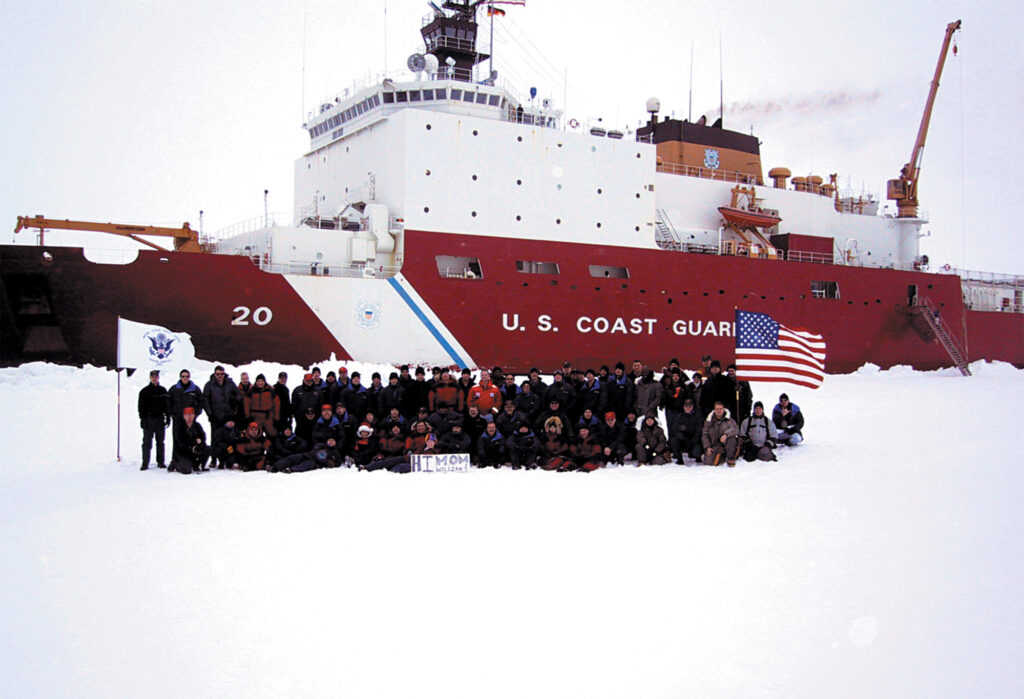
Coast Guard ice breaker Healy
WASHINGTON: After a decade of dithering, the White House and Congress have finally come close to agreeing that America must build a new icebreaker. One congressional subcommittee, the Senate Appropriations defense subcommittee, has actually come up with the $1 billion needed to build it in less than a decade.
But the money wasn’t put in the Coast Guard’s budget. The defense subcommittee put the money in the Navy’s budget. But the Navy won’t operate the ship. So why should the Navy get the money? Is that a good idea?
It has a precedent. The most modern icebreaker in our fleet, the Healy, was built by NavSea, although some of those involved recall that the Navy didn’t much like it and only kept going under orders from the late Sen. Ted Stevens, towering master of all things to do with defense appropriations.
“The Navy tried to say, OK, we’re done,” when the program first faced difficulties,” retired Coast Guard Rear Adm. Jeff Garrett tells me. “Ted Stevens said, No — you’re not done. And they built it.” A Coast Guard captain was program manager and it was run by a mixed staff of Navy and Coasties. Garrett, one of the country’s most experienced Arctic operators and a Coastie who understands budgeting and acquisition, just wants the icebreaker built. The Coast Guard could build it, bolstered by their experience over the last few years building $500 million National Security Cutters, Garrett argues. Or the Navy can do it.
“Money is money. Congress can put the money wherever it wants,” he notes. Should the $1 billion actually be appropriated, it will actually push the White House faster than it currently plans to move. The 2017 budget asks for a paltry $150 million to begin icebreaker acquisition. Garrett says it loks as if the Office of Managment and Budget intends to do “incremental funding” and fund the icebreaker as the Navy does aircraft carriers over years as the Navy does with aircraft carriers.

Coast Guard icebreaker Polar Star
“If you got the whole billion dollars up front that’s even better because you don’t have to sweat it out up front and get approval for smaller amounts each year,” Garrett notes.
Two experts at the Heritage Foundation don’t want the Pentagon to build the icebreakers, though Justin Johnson, their defense budget expert, and Brian Slattery support building the new ship. Slattery, who follows the Coast Guard for Heritage, thinks “the icebreaker should be appropriated through the Coast Guard acquisition, construction, and improvements (AC&I) budget, because we need to get over the imaginary ceilings on these acquisition accounts.”
Although Coast Guard Commandants have said for years that they need at least $1.5 billion annually to rebuild the service’s air and sea fleets, they usually get roughly $1 billion and there’s been deep reluctance both within the Obama Administration and on the Capitol Hill to break that habit.
“The administration has appeared incapable for years of requesting the $1.5 billion for AC&I that the Coast Guard has said is a minimum requirement for modernization funding. While Congress has done a pretty good job at adding funding where necessary for the Coast Guard the past few years, the White House still sets the tone for these priorities, and the Coast Guard (in the context of the overall DHS budget) has been pushed toward the bottom of the list for years,” Slattery says in an email.
What’s wrong with the Navy building the icebreakers? The Navy doesn’t fully fund its Shipbuilding and Conversion accounts (known as SCN), leaving the US with a shrinking fleet. “I worry that this $1 billion addition for the Coast Guard will similarly make the SCN account look robust but without actually making progress toward the Navy’s battle force fleet requirements,” Slattery argues.
But Garrett doesn’t care where the money goes as long as the ships gets built. “The whole issue with this icebreaker has been debated for decades,” says one of the chief co-authors of two National Research Council studies, “Polar Icebreakers in a Changing World ” in 2007 and “National Security Implications of Climate Change for U.S. Naval Forces” in 2011. “The detailed procedural stuff. Well, that’s just procedural stuff. It can be executed by DoD or by DHS.”
Garrett argues “the real question has been the country’s commitment.” The SAC-D vote would seem to indicate there’s hope. But… “Will I bet all my retirement pay all this money will end up untouched at the end of the process, and be there on October 1? No, but it’s a hopeful sign,” says the former commander of the 420-foot Healy.
As Chinese ships sail between the islands of the Bering Sea, and Russia stakes claims to the Arctic, we rely on the Healy and its sister ship the Polar Star, a 399-foot heavy icebreaker commissioned in 1976, Garrett and virtually every American who’s sailed the Arctic, say they aren’t enough.
Major trends and takeaways from the Defense Department’s Unfunded Priority Lists
Mark Cancian and Chris Park of CSIS break down what is in this year’s unfunded priority lists and what they say about the state of the US military.


























